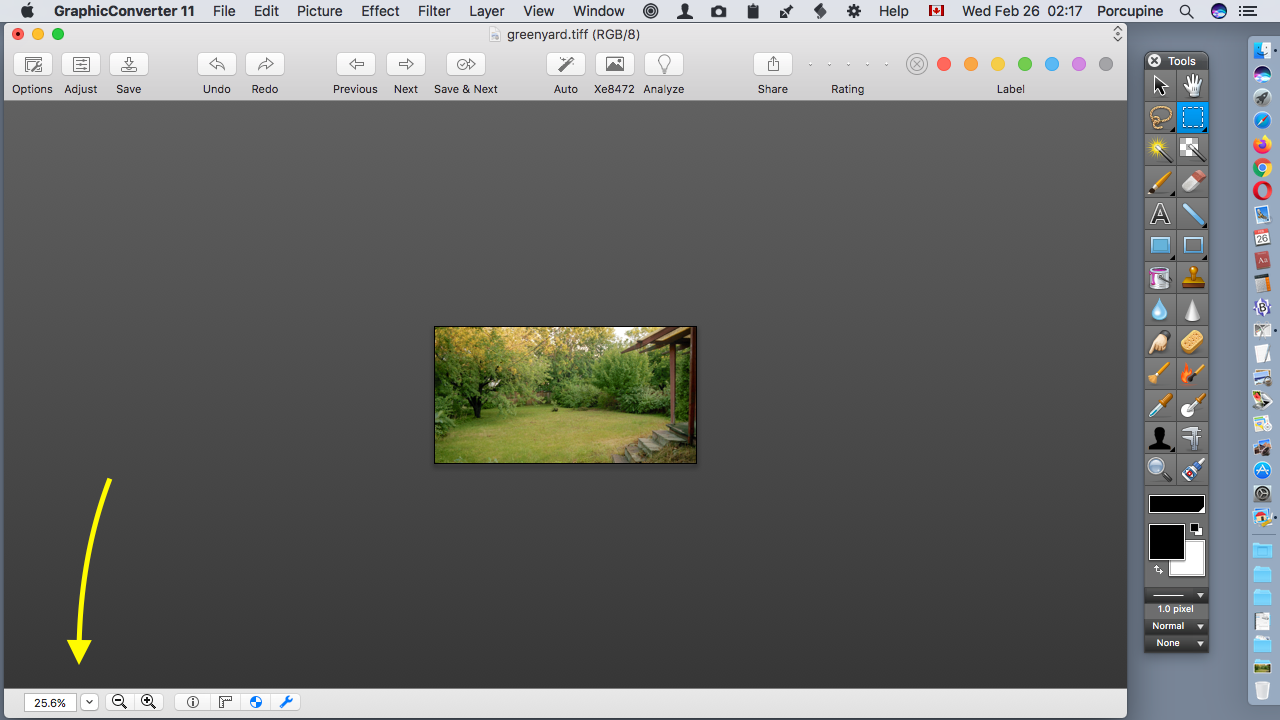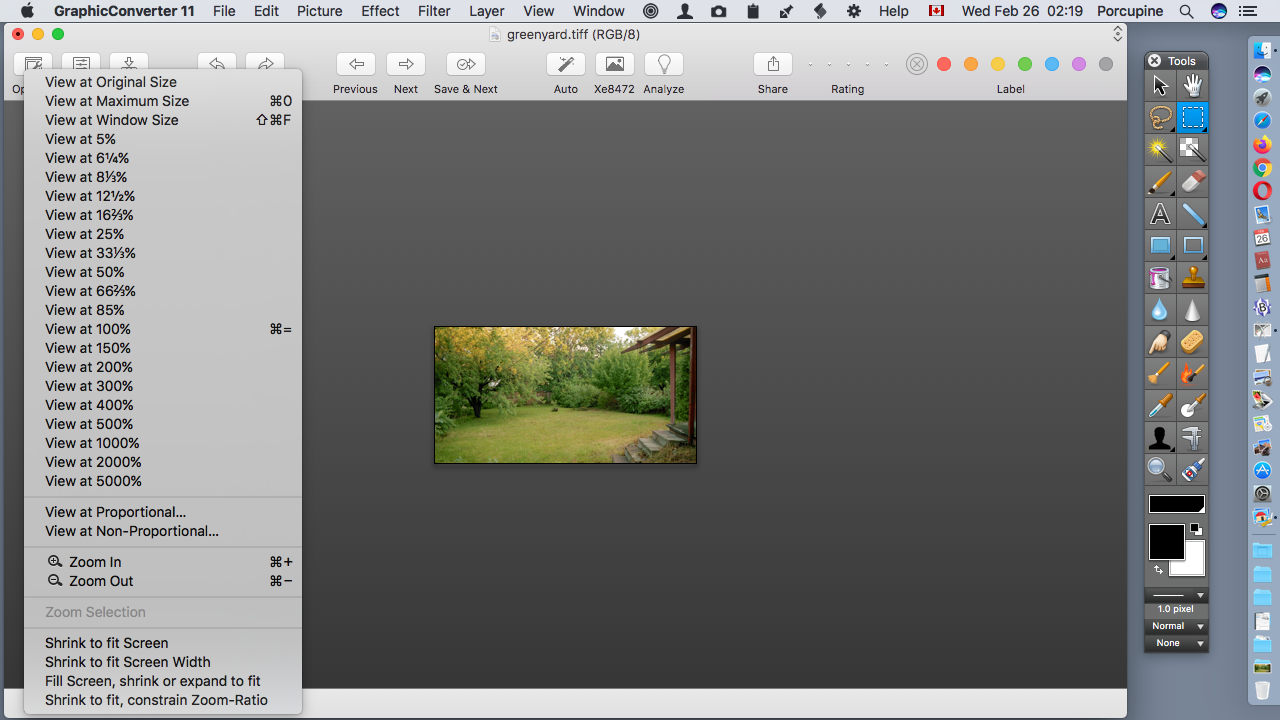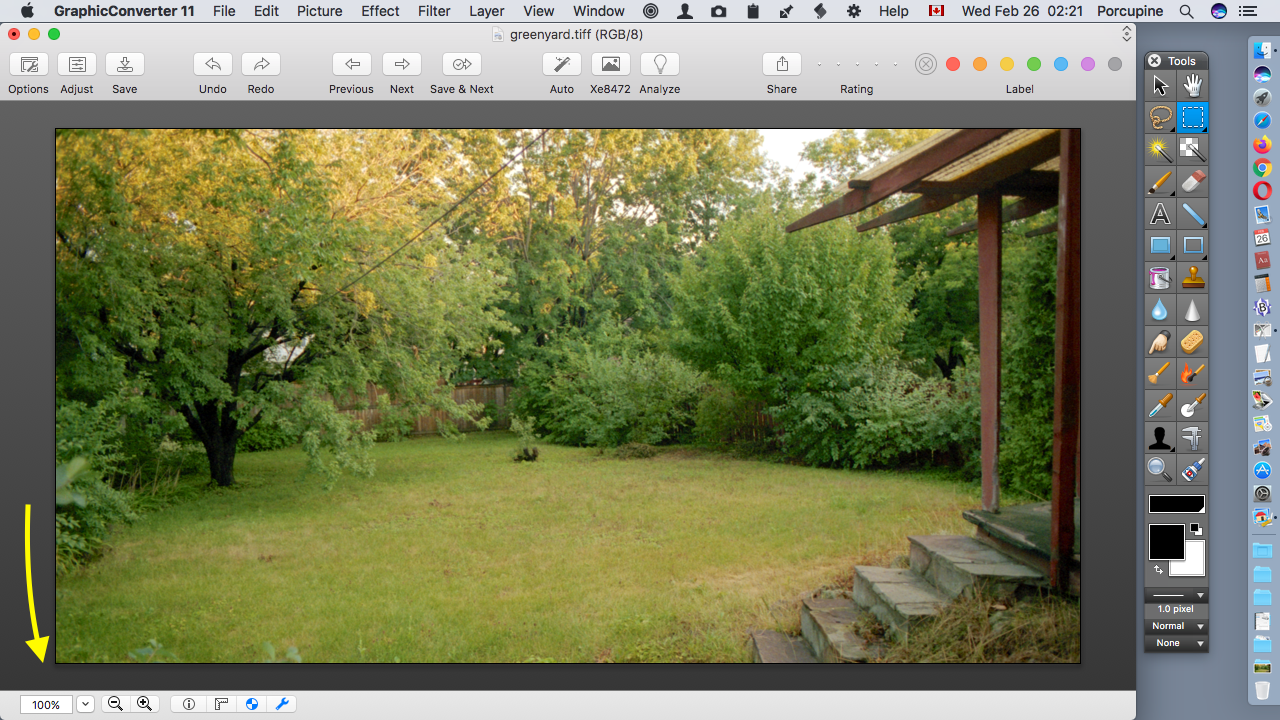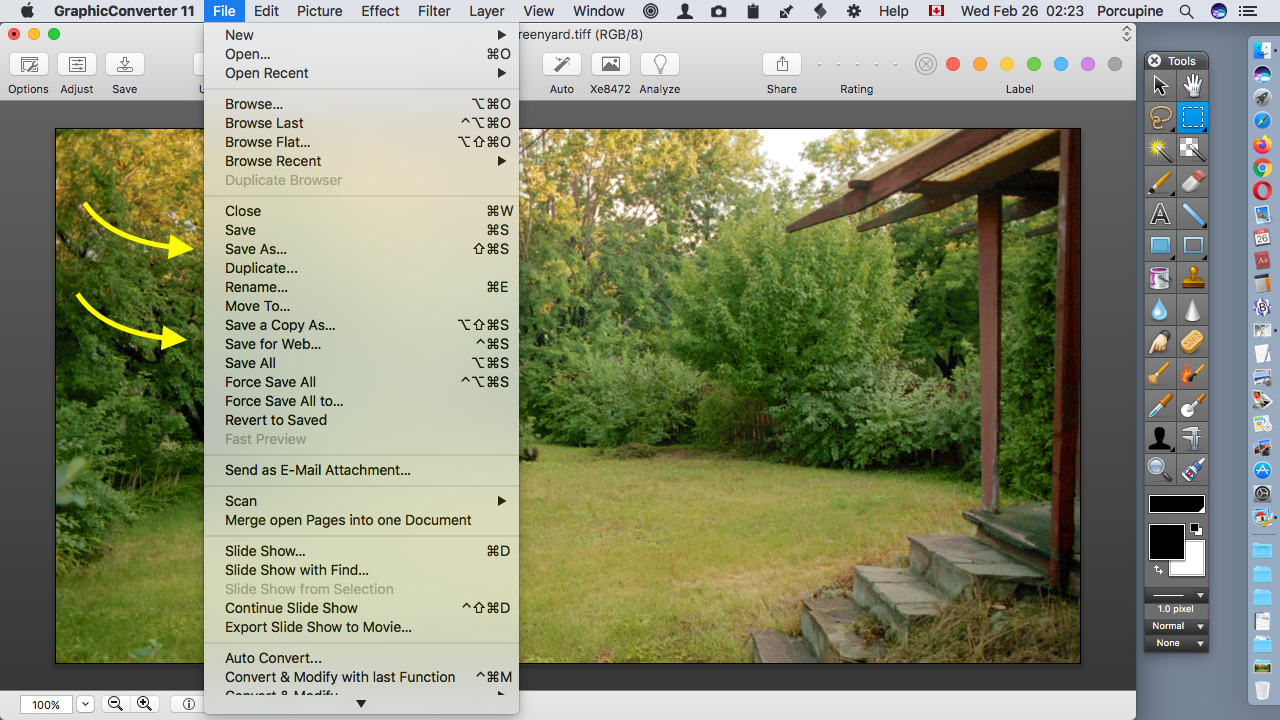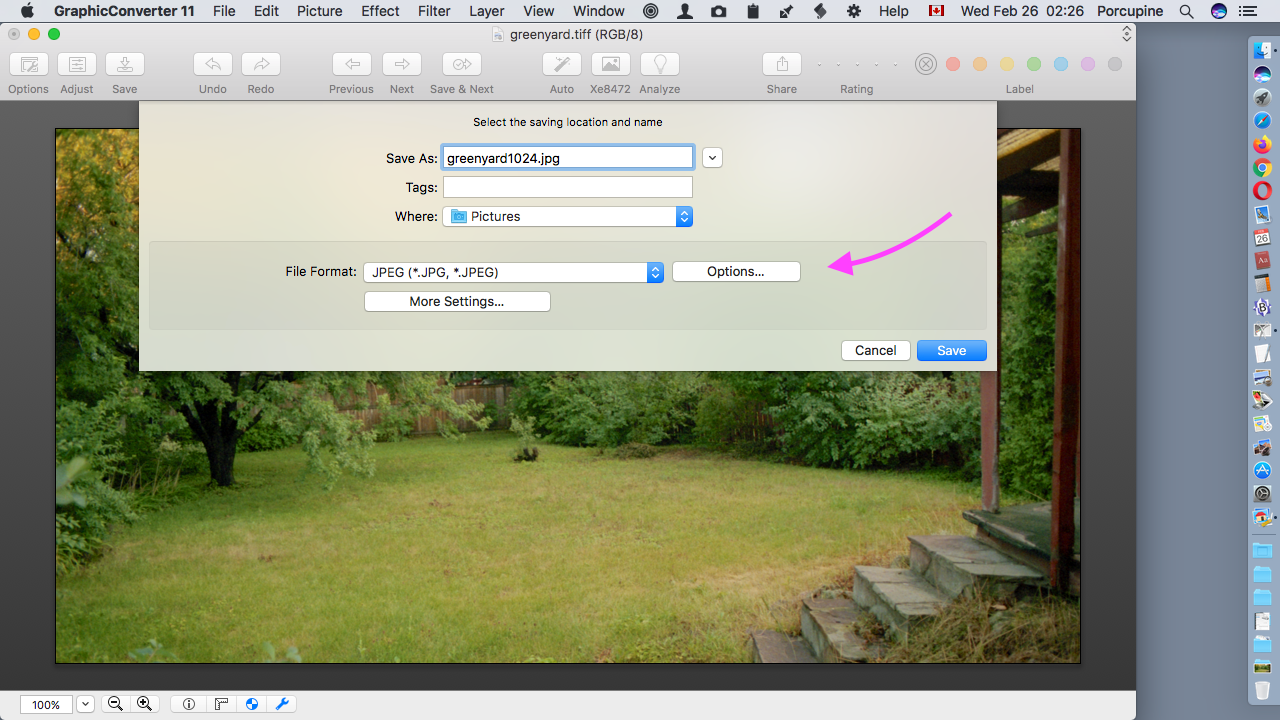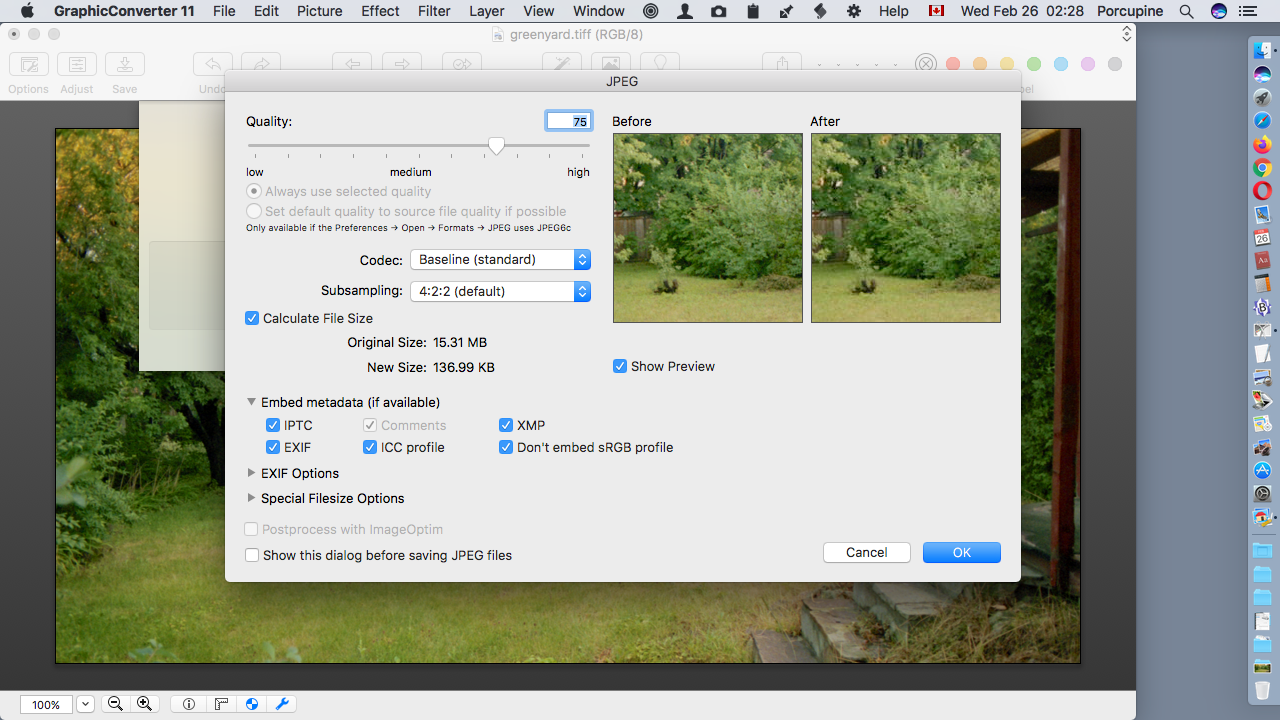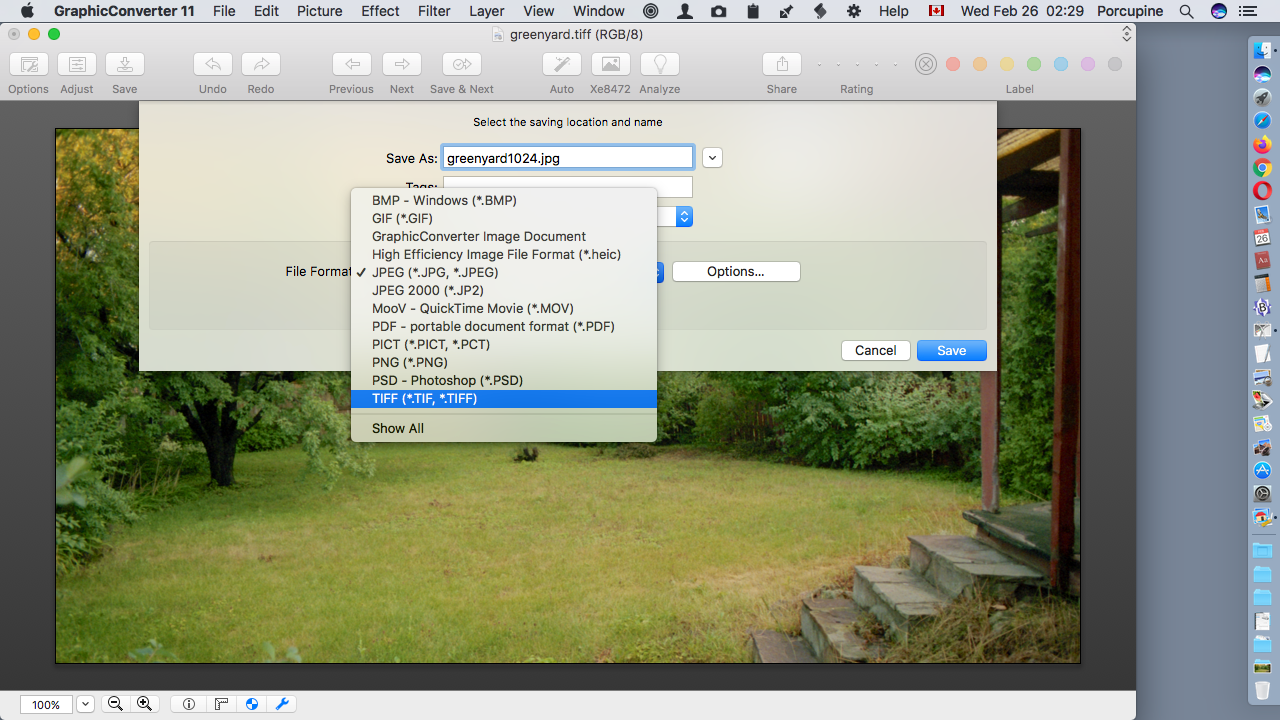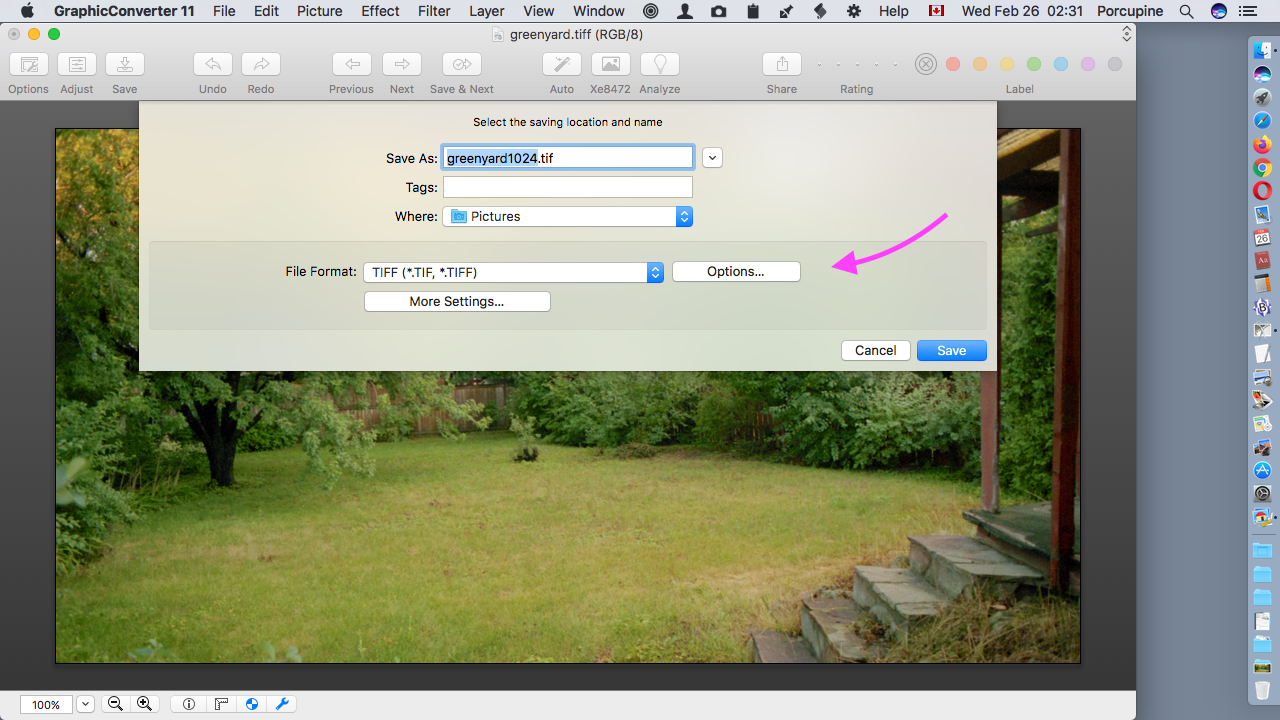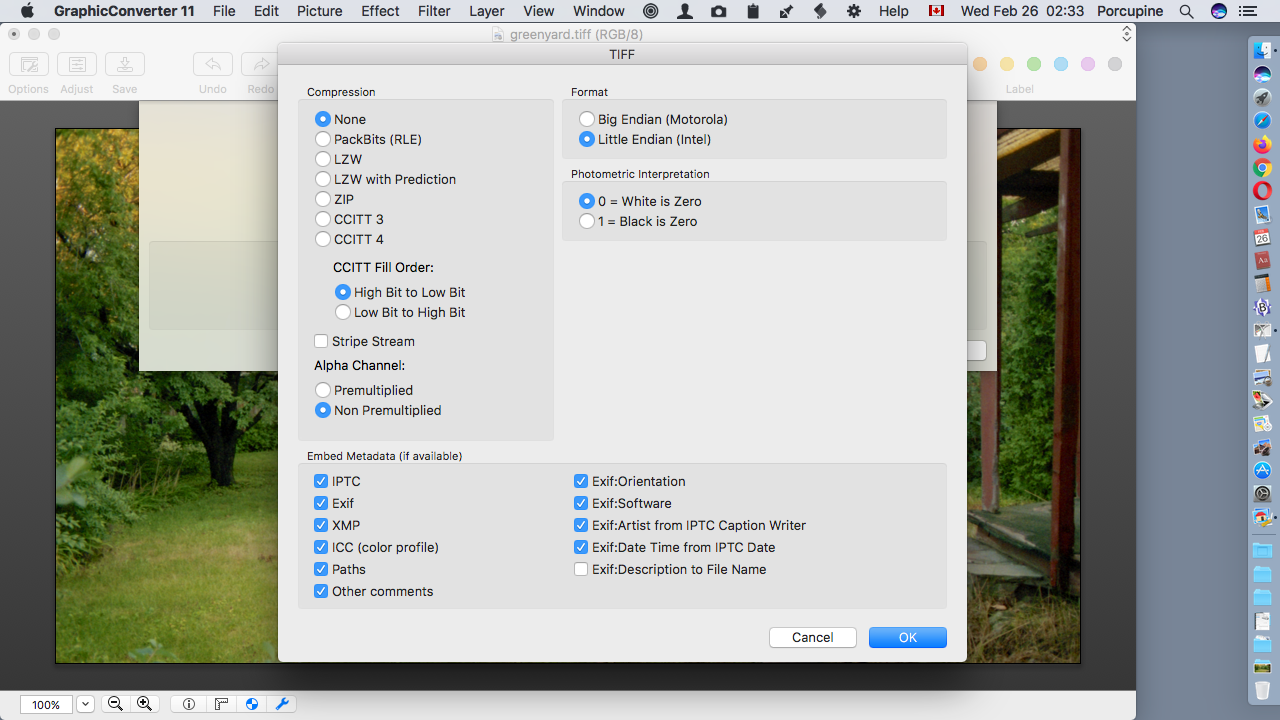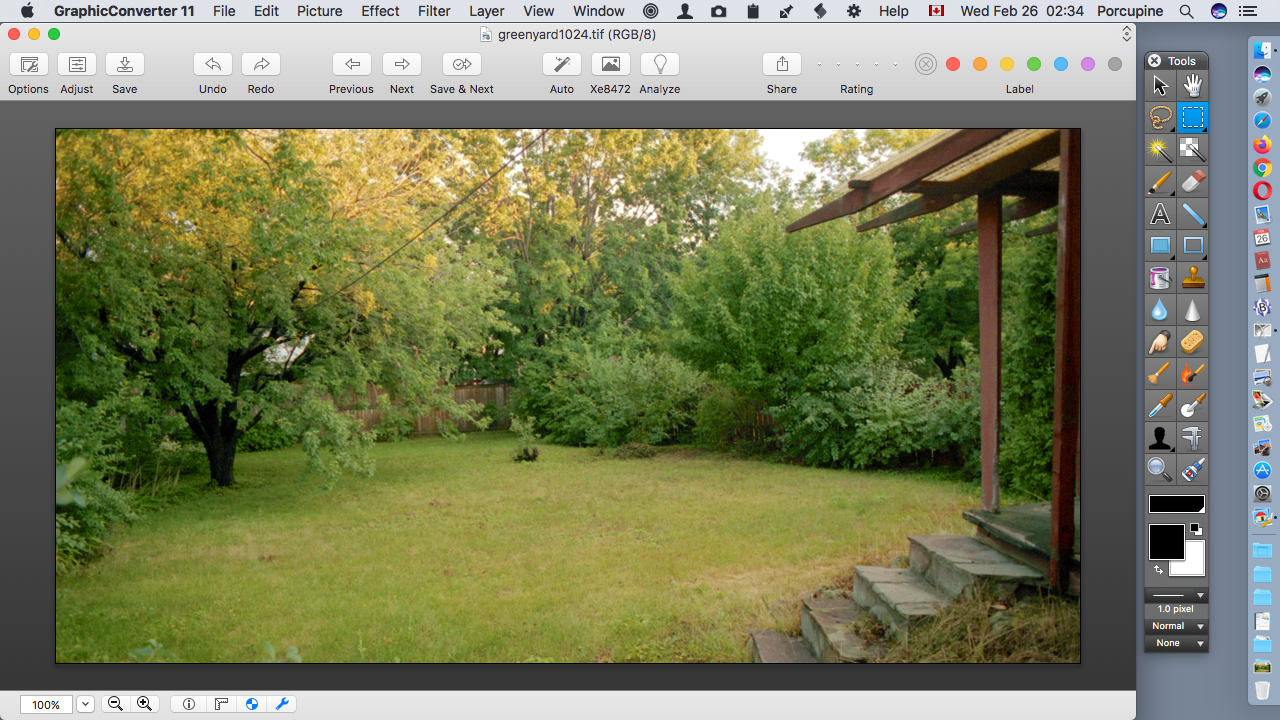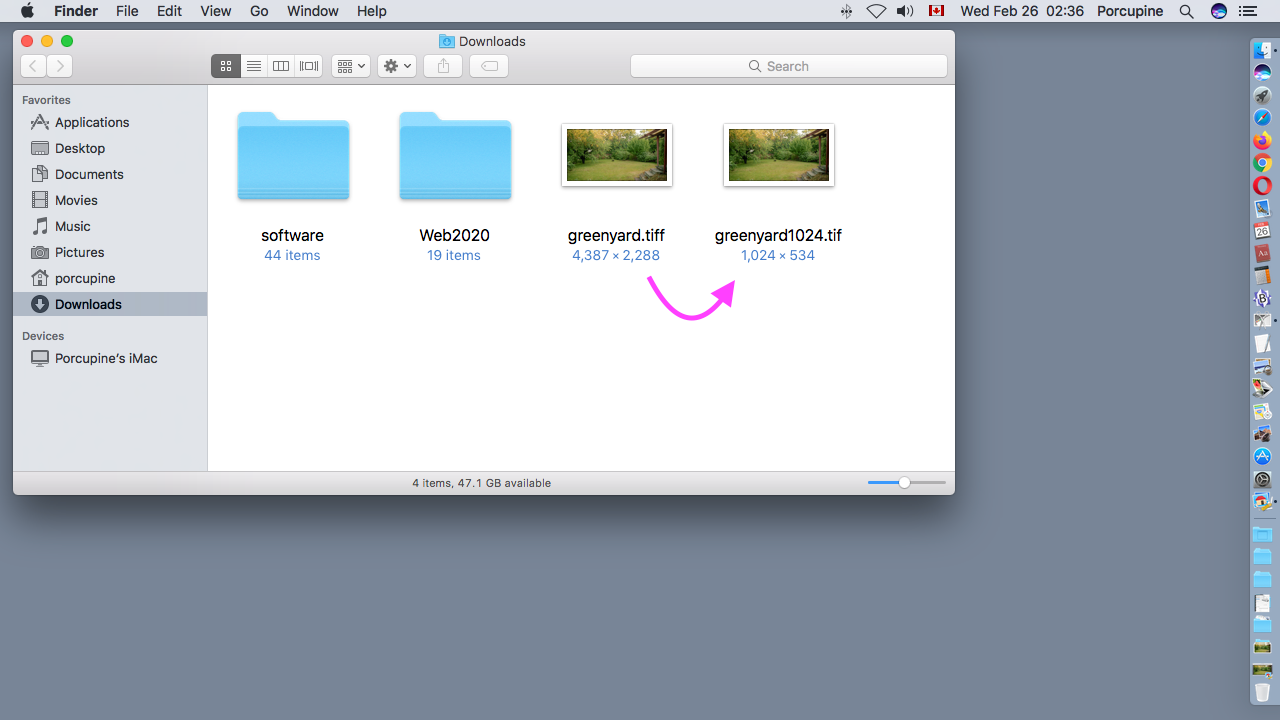

Some pages of this website may contain advertising and cookies.


Some pages of this website may contain advertising and cookies.
=== by Bob Sutherland ===
A lesson on how to resize a digital photograph using GraphicConverter by Lemke Software GmbH for Macintosh computers.
GraphicConverter is a photo editing program that you can download and purchase on the Internet from the computer programmer's website. The program is shareware so read the website to determine if you can use the program for free or what license you have to buy.
https://www.lemkesoft.de/en/
The following are screenshot images I captured of my computer screen as I worked through the process of resizing a digital photograph.
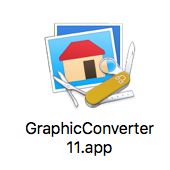
The first step is to start up the GraphicConverter application. There are many different ways you can accomplish this task. You may find the GraphicConverter 11.app icon in the Dock at the bottom or side of your screen. You should find the GraphicConverter 11.app among all your application icons displayed by the Launchpad. Alternatively you can look for the GraphicConverter program in the Applications folder on your hard disk.
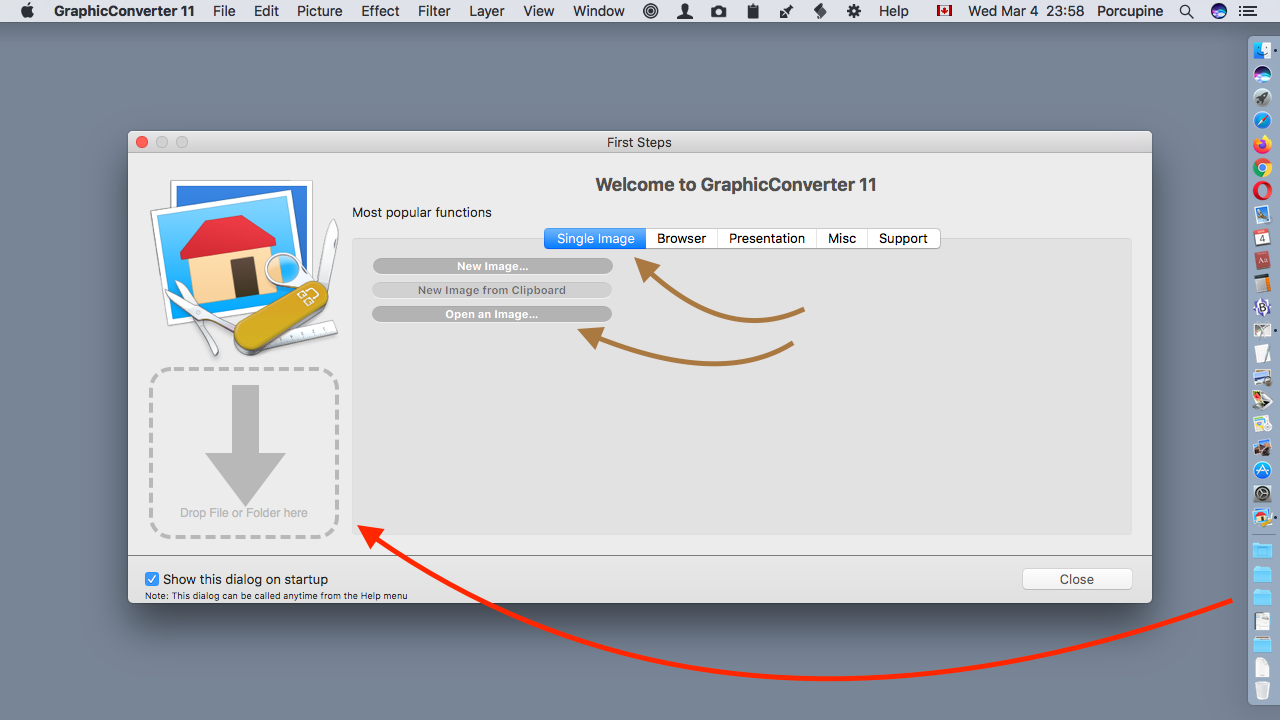
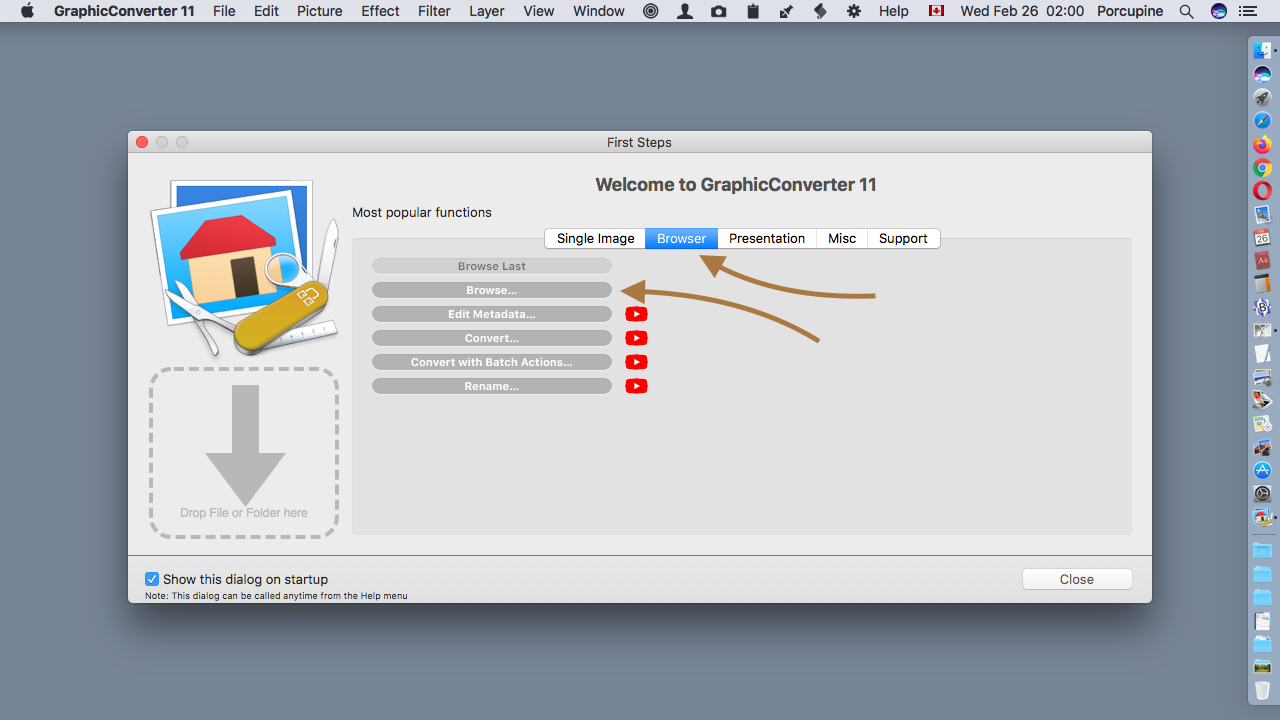
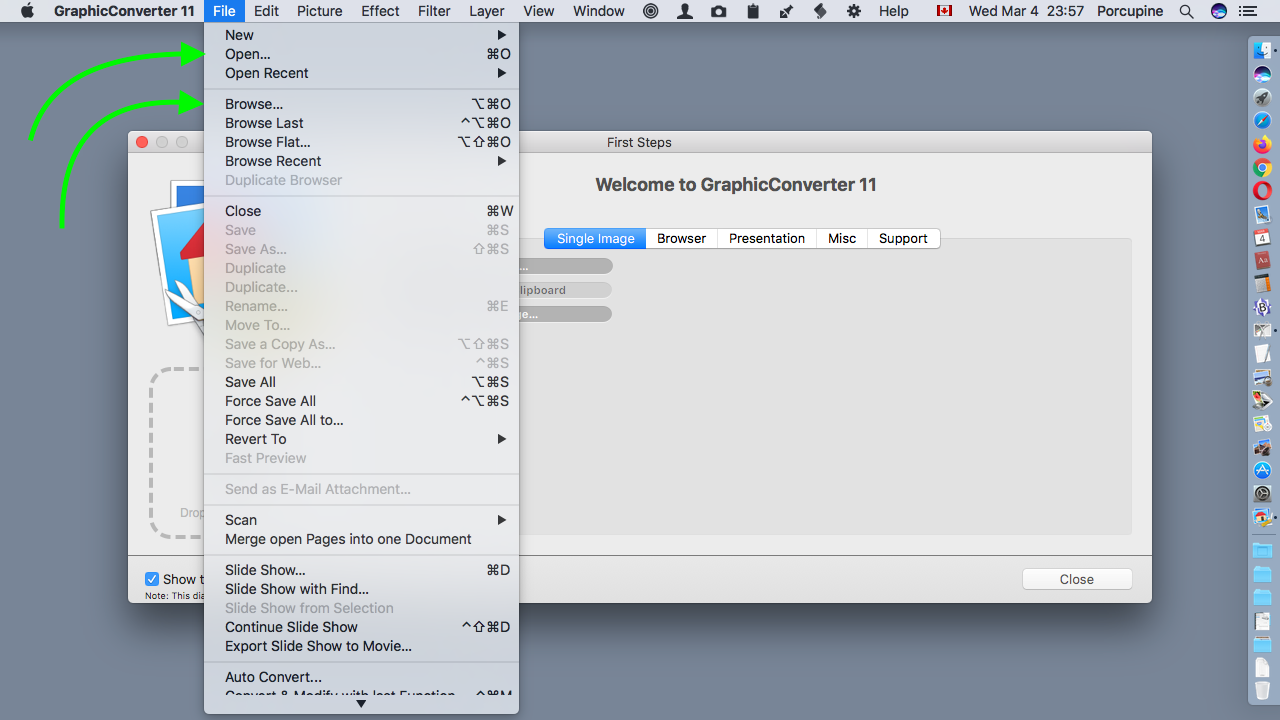
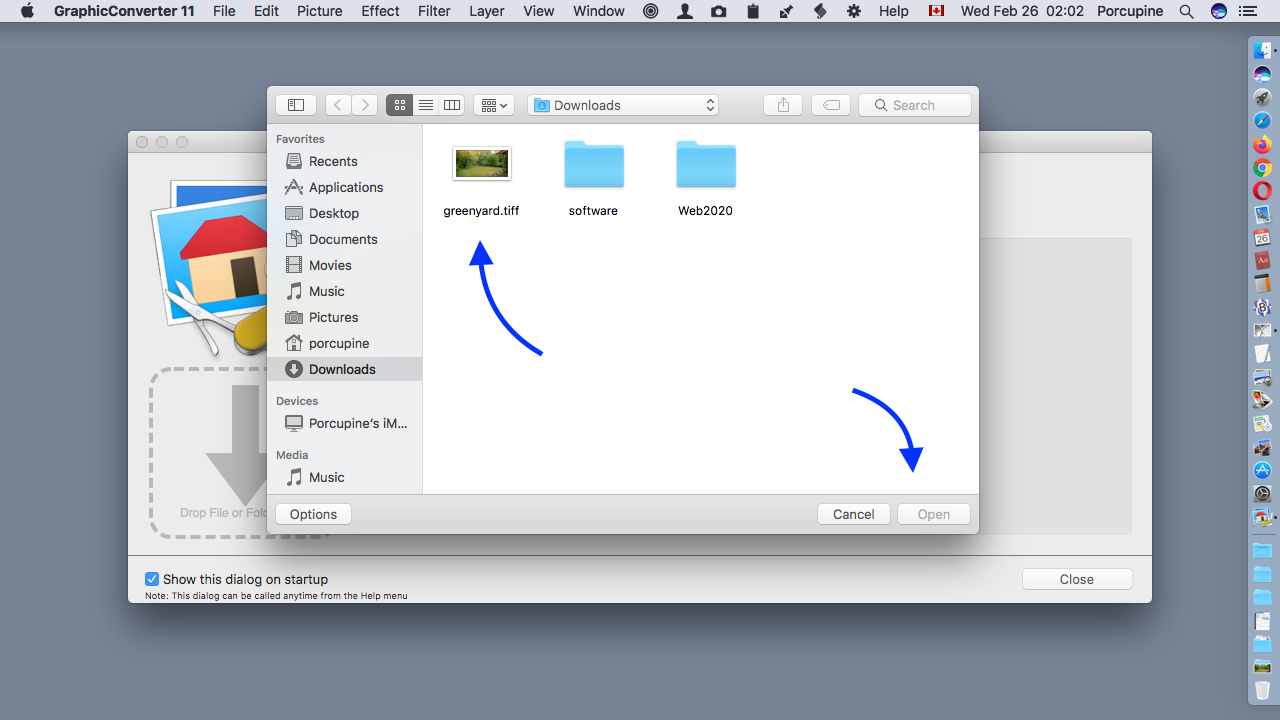
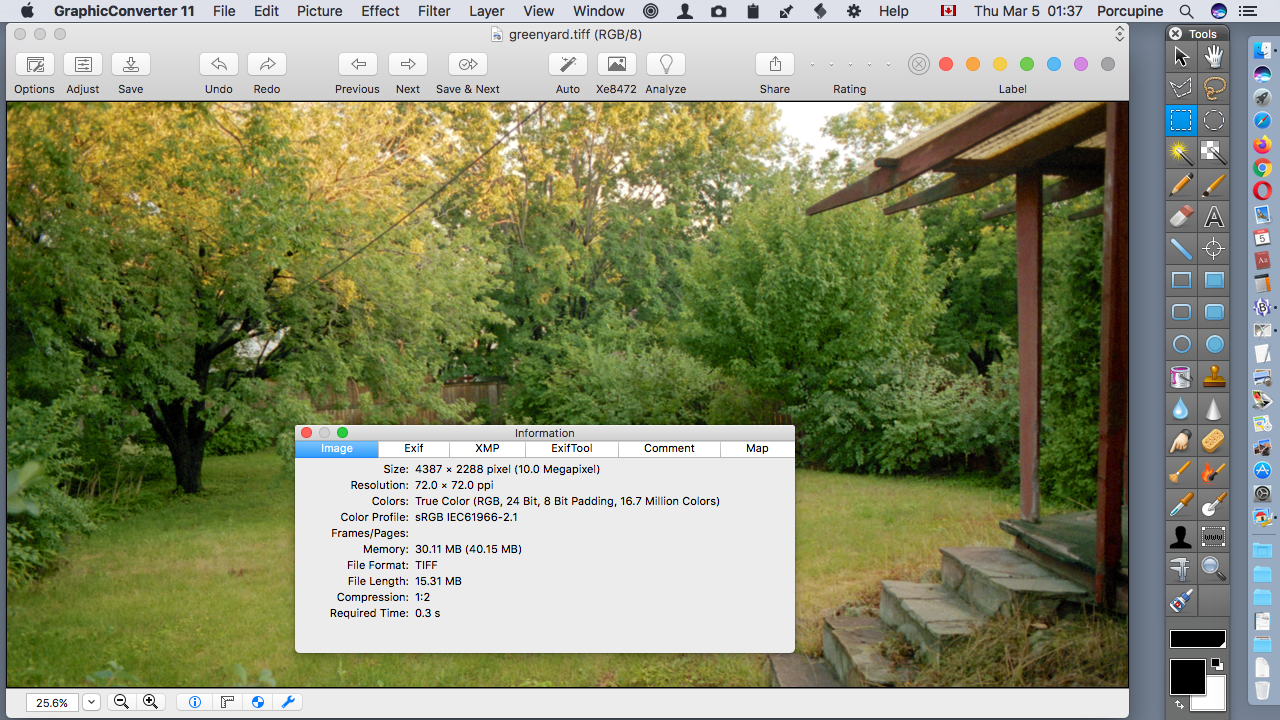
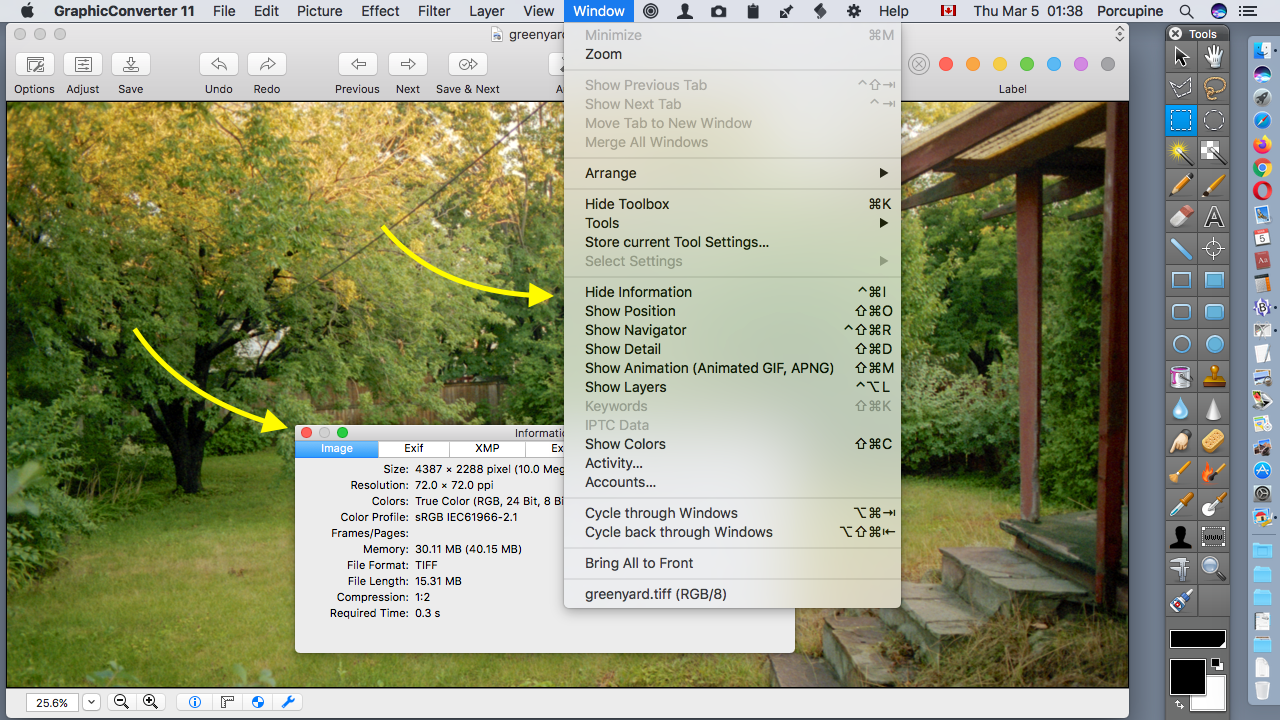
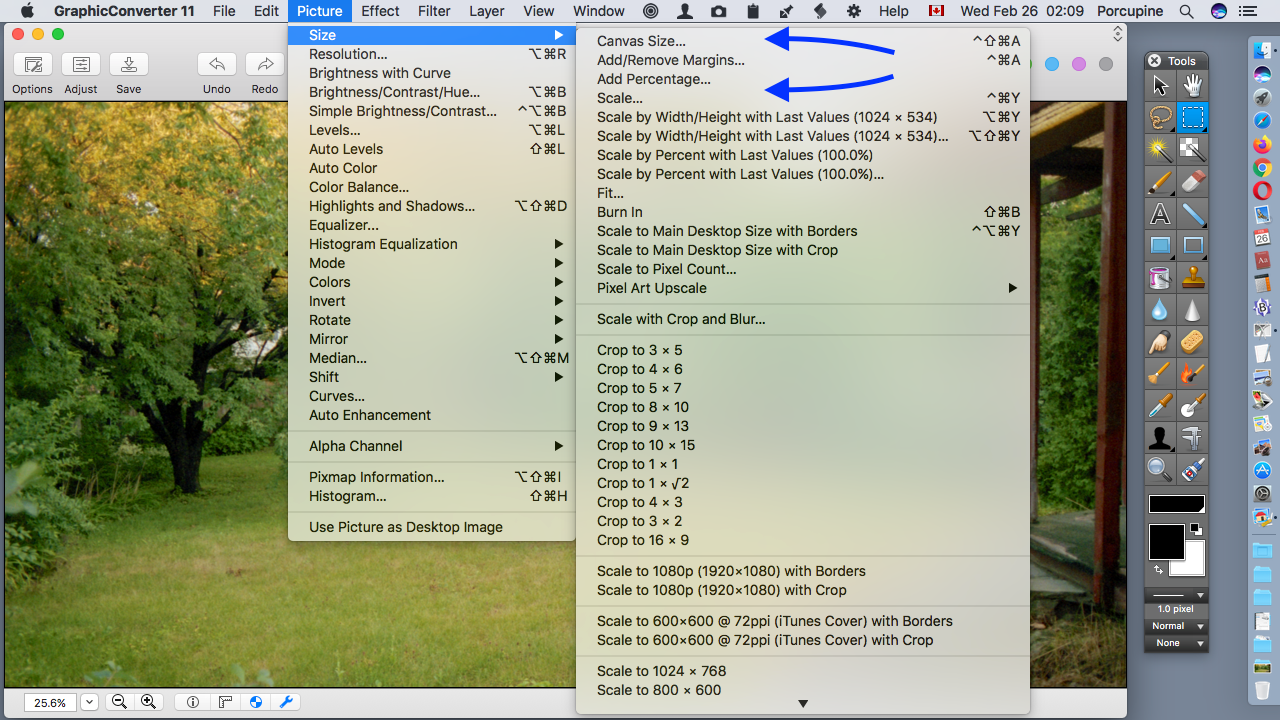
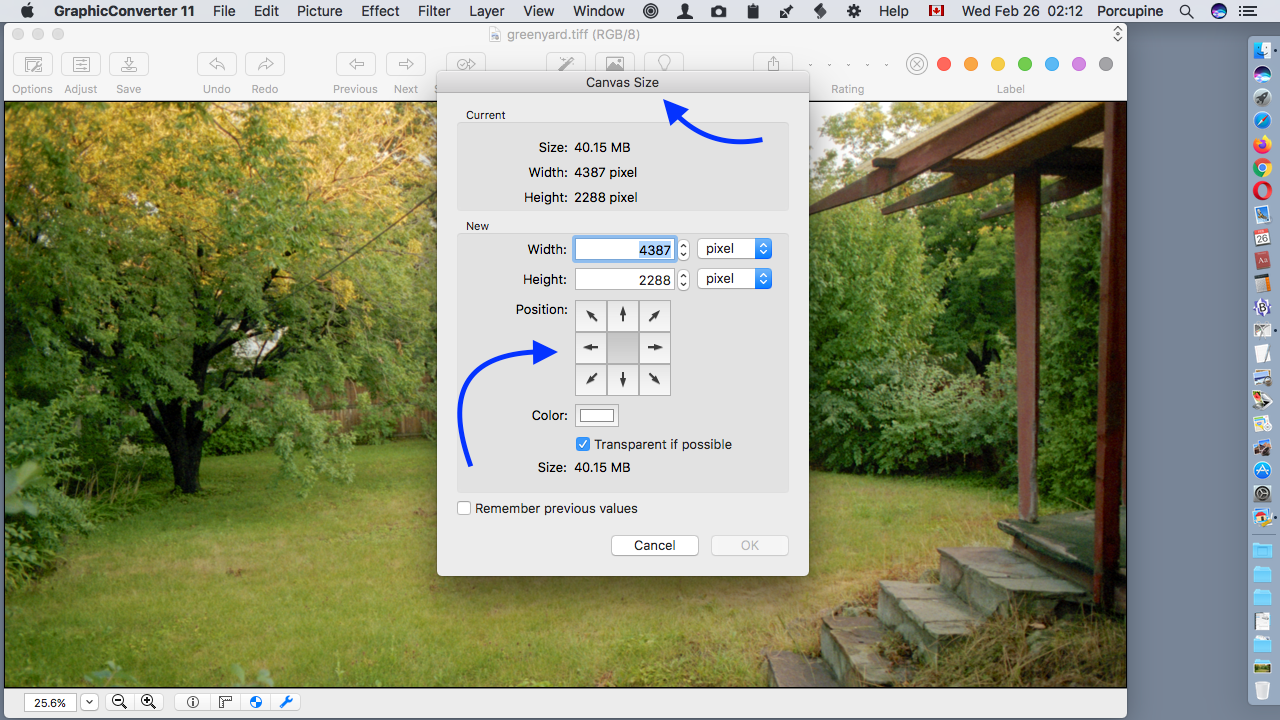
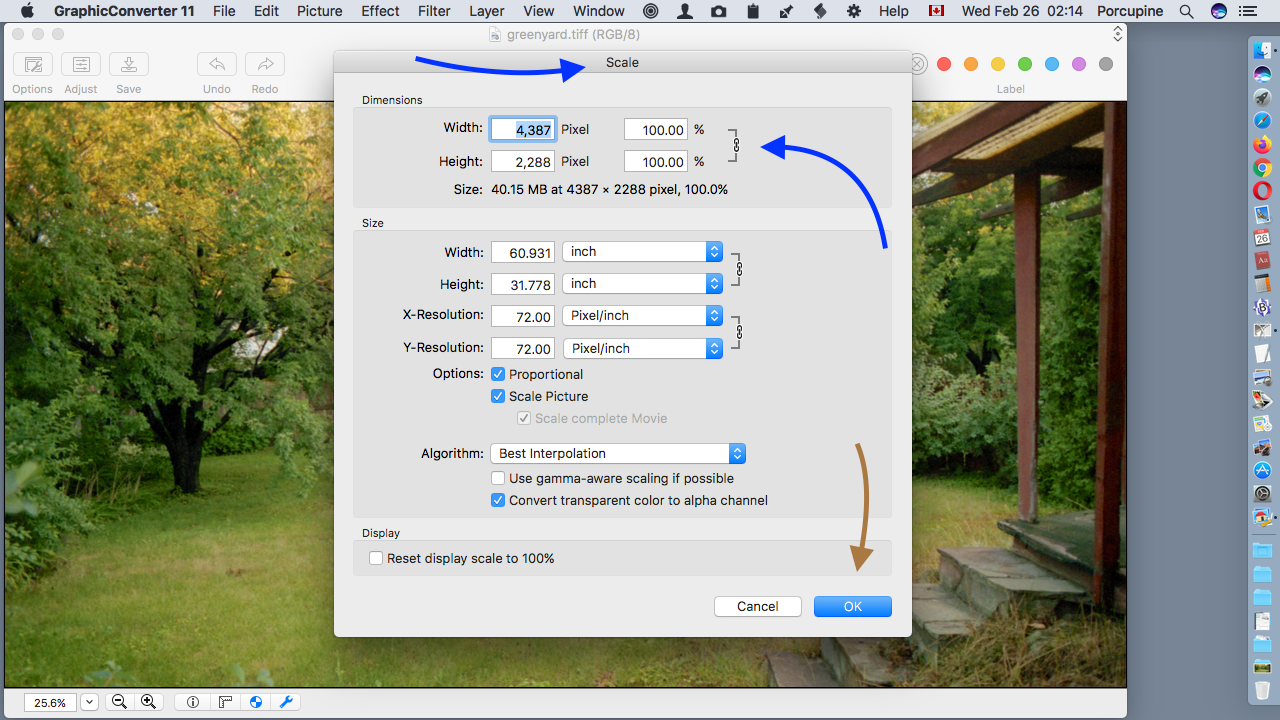
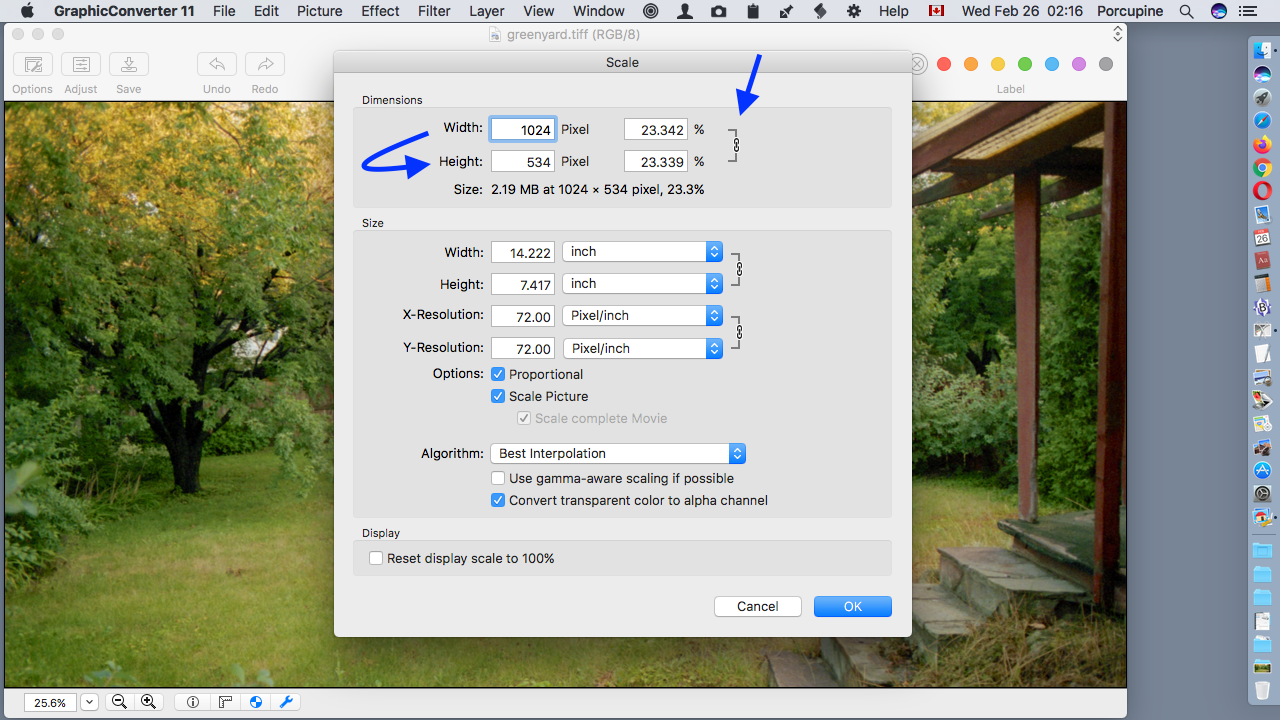
Since Width is the longest side I have changed it to 1024 pixels. The GraphicConverter application automatically changes the Height measurement.
